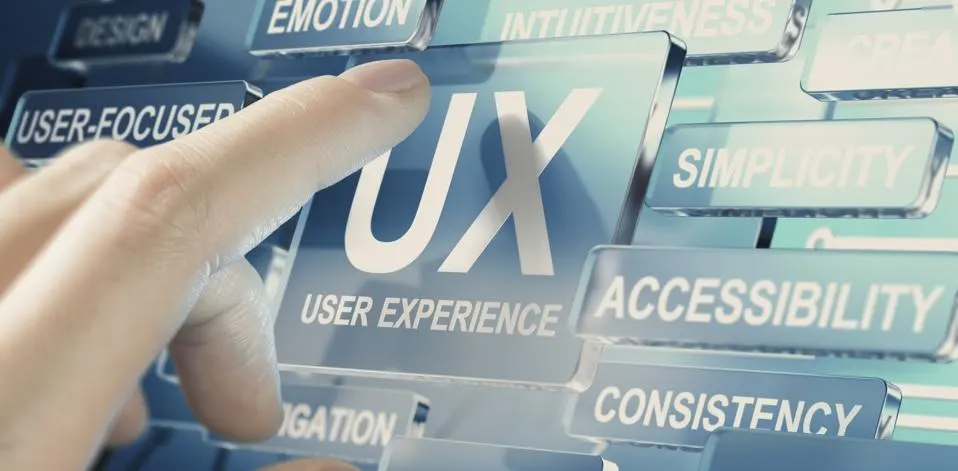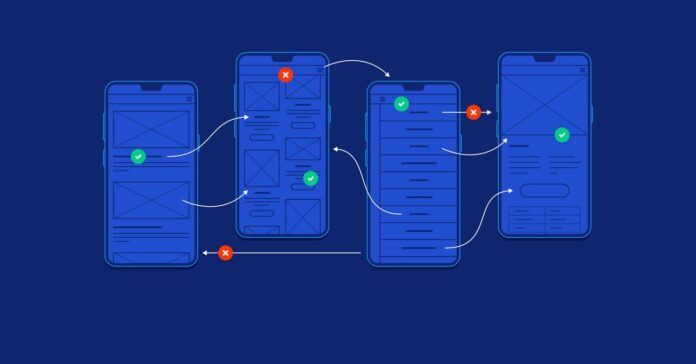In today’s fast-paced digital landscape, where websites and apps are a dime a dozen, what sets the great ones apart from the rest? The answer is – the user experience (UX) they offer.
You know, that feeling you get when you effortlessly navigate a website or an app, finding exactly what you need without pulling your hair out?
That’s the magic of UX design at play. And behind this magic, you often find UX agencies working tirelessly to make our digital interactions seamless and enjoyable.
Let’s learn more about it.
UX (User Experience): How Did It Evolve?

Let’s take a quick trip down memory lane.
Remember the early days of the internet, where websites resembled a chaotic collage of colors and mismatched fonts? Back then, UX wasn’t even on the radar. But as technology evolved, so did our expectations.
We started demanding websites and applications that were easy to use, visually appealing and efficient. This marked the invention and growth of UX design.
Fast forward to today, and UX design has become a critical component of the digital world. It’s not just about aesthetics; it’s about understanding human behavior, psychology, and how people interact with technology.
As a result, UX agencies have emerged as the unsung heroes, working diligently behind the scenes to craft digital experiences that keep us engaged and satisfied.
The Trends in User Experience Design in the Retail Market

When it comes to choosing a UX agency, you should always check if they are aware of the new trends or not. Here are a few of those you should look out for.
1: A User-Centered Design
Picture this: you’re searching for a new gadget online, and you stumble upon a website that takes ages to load, bombards you with pop-ups, and hides the “Add to Cart” button in a virtual maze. Frustrating, right? That’s where user-centered design comes into play.
This trend focuses on putting the user at the heart of the design process. UX agencies collaborate closely with clients to understand their target audience, their pain points, and their goals. This results in interfaces that are intuitive, efficient, and delightful.
2: Focusing on Minimalism Over Anything Else
In the world of UX, less is often more.
Enter the minimalist design trend. It strips away clutter and focuses on essential elements, creating a clean and elegant digital canvas. Think of it as the, um… Marie Kondo of design – sparking joy by removing unnecessary elements that can overwhelm or confuse users.
Apple’s sleek interface design is, in essence, an excellent example of this form of UX. I’d also consider Google’s uncluttered search page to be a part of the same.
3: The Attractiveness of Personalization
Remember when online shopping used to be a generic experience? You’d log in, sift through a sea of products, and hope to stumble upon something you liked. Well, those days are fading fast, thanks to the personalization trend.
UX agencies are harnessing the power of data and AI to create personalized experiences that make users feel like VIPs. Imagine logging into an e-commerce site, and instead of sifting through countless products, you’re presented with a curated selection based on your past preferences. It’s like having your own personal shopper, but without the hefty price tag.
Whether it’s Netflix recommending shows tailored to your tastes or Spotify crafting playlists based on your mood, personalization is all about making users feel understood and valued. And UX agencies are at the forefront of this trend, utilizing technology to create experiences that are as unique as your fingerprint.
4: The Mobile-First Movement
Raise your hand if you’re reading this on your smartphone. Chances are, many of you are. The mobile-first movement acknowledges that our digital experiences are increasingly happening on smaller screens, which is why UX agencies are placing a heavy emphasis on designing for mobile devices.
Remember the frustration of trying to pinch and zoom your way through a desktop-designed website on your phone? Mobile-first design flips the script, ensuring that websites and apps are crafted with mobile users in mind from the get-go. Buttons are touch-friendly, content is concise, and navigation is as smooth as swiping through your Instagram feed.
5: The Role of UX Agencies: More Than Meets the Eye
So, what’s the deal with UX agencies anyway? Are they just a bunch of design wizards waving their digital wands? Well, not quite. UX agencies are the driving force behind the scenes, orchestrating a symphony of research, design, testing, and optimization.
They dive deep into user research, conducting surveys, interviews, and usability tests to understand what makes your audience tick.
Armed with this knowledge, they craft wireframes and prototypes, outlining the blueprint for your digital experience. But it doesn’t stop there. UX agencies conduct rigorous testing, identifying pain points and refining the design until it’s as smooth as butter.
FAQs – Frequently Asked Questions

1. What is UX design?
User Experience (UX) design refers to the process of creating products or systems that provide meaningful and positive experiences for users. It encompasses various elements such as usability, accessibility, interaction design, visual design, and more.
2. Why is UX design important?
UX design is crucial because it directly influences how users perceive and interact with a product. A well-designed user experience enhances user satisfaction, increases user engagement, and ultimately contributes to the success of a product or service.
3. What is the difference between UX design and UI design?
User Experience (UX) design focuses on the overall experience and usability of a product, while User Interface (UI) design deals with the visual and interactive elements. Users directly interact with. UX design is about how a product works, while UI design is about how it looks.
4. What are the key principles of UX design?
Key principles of UX design include empathy for users, simplicity, consistency, usability, accessibility, and providing clear feedback. The aim is to create designs that are user-centered and intuitive.
5. What is the UX design process?
The UX design process typically involves research, ideation, design, prototyping, testing, and iteration. It begins with understanding user needs, followed by creating solutions, testing them with users, and refining based on feedback.
In Conclusion

As we navigate the ever-changing currents of the digital world, one thing remains constant: the pivotal role of UX agencies. And, as technology continues to advance, you can bet that these will be there, ready to transform trends into timeless user experiences.









